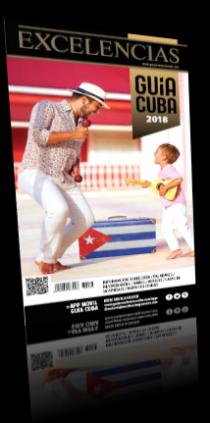- Las Tunas
A bordering city between the central and eastern regions, its capital was founded in 1796, bears the pseudonym of “Capital de la Escultura Cubana” (The Capital of Cuban Sculpture). The coexistence of several architectural styles is the main characteristic of its Historical Center. Although it currently has little tourist development, it has interesting attractions. Of deeply-rooted peasant folklore, the city is celebrated due to the Jornada Nacional Cucalambeana (National Cucalambeana Day) a festival of traditional popular culture held in honor to the poet Juan Cristóbal Nápoles Fajardo.
Capital: Las Tunas
Extension: 6 588 sq. km
Municipalities: Las Tunas, Puerto Padre, Jesus Menéndez, Manatí, Majibacoa, Amancio, Colombia and Jobabo.
Denonym: tunero/a
Limits: it limits to the north with the province of Camagüey and the Atlantic Ocean, to the east with the province of Holguín, to the south with the province Granma and the Golfo de Guacanayabo, and to the west with the province of Camagüey.
Access: it is crossed by the Carretera Central (Central National Road) and the Central Railway and has an airport for domestic flights.
Places of interest
Parque Vicente García (Park)
Vicente García, Colón, Francisco Vega and Francisco Varona streets
Crowned by a marble statue of the local hero, Major General Vicente Garcia, it has on its southwestern side a small church, while on the northeastern, separated by Colon street, is the small Plaza Martiana de Las Tunas, the work of architect Domingo Alás Rosell, which was inaugurated on March 25, 1995. It is composed of a sundial, a calendar, a solar floodlight, a mask of Martí sculpted by Rita Longa and a ceramic mural by artist Pedro Escobar that represents the joining of the tuneros to the struggles for independence.
Museo Histórico Provincial (Museum)
Francisco Varona, between Ángel Guarda and Adolfo Villamar streets, Tel 031 34 8201
It has an eclectic collection of pieces related to history and local culture, as well as a room dedicated to the internationalism of the Cuban people, and another one to natural history.
Casa de Vicente García
5 Vicente García between Francisco Vega and Julián Santana streets, Tel 031 34 5164
In this building, on September 26, 1876, General Vicente Garcia proposed setting fire to the city to prevent it from falling into the hands of the Spaniards. The building, which miraculously survived the fire, is today a museum commemorating the wars for independence.
Plaza de la Revolución (Square)
Ave. 30 de noviembre and Ave. 2 de diciembre
Its main feature is a monument dedicated to Major General Vicente Garcia, built in pink concrete with bas-reliefs, showing the local hero with the machete drawn. In the square is the Salón de los Generales, which exhibits busts of other outstanding generals who participated in the struggles for independence.
Fuerte de la Loma (Fortress)
Municipality of Puerto Padre, Las Tunas
It was built in mid-1869 by a section of the Spanish Army's engineers. Declared a National Monument in 1981, it is the only one of the country in whose construction the technique of mampuesto (rough stone) was used from local elements such as limestone and sand. Although considered impregnable, on February 14, 1877 it was taken by a mambí command under the command of Vicente García.
Playa Covarrubias (Beach)
Located on the northern coast of the province, it has 4 km of white sands and turquoise waters where you can practice water sports such as scuba diving and deep-sea fishing. It is the only one of the beaches in the province that has accommodation in the Brisas Covarrubias Hotel (Playa Covarrubias/Tel 031 51 5530).














